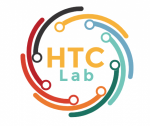https://psyarxiv.com/ad7gw/
Decision-makers in diverse fields ranging from medicine to law to public policy depend on the clear and unbiased communication of probabilities. Expert judges often express probabilities verbally (e.g., unlikely) rather than numerically (e.g., 25% chance). Researchers have criticized the practice because verbal probabilities are vague and imprecise. However, little work has investigated the pragmatic consequences of their usage. In three online experiments (Ns = 201, 439, 435), we showed that the directionality of verbal probabilities leaked information about experts’ expectations. Receivers interpret these inferred expectations as recommendations. The inferred recommendation, in turn, influences their decisions. Compared to numeric probabilities, the directionality of verbal probabilities makes their interpretation more ambiguous due to pragmatic implicatures. We discuss how senders could improve communication fidelity by using numeric probabilities as a principal form of communicating probabilistic information, as their directionality and interpretation are less ambiguous and more consistent.
Latest posts by Ryan Watkins (see all)
- How we (Anthropic) built our multi-agent research system - July 1, 2025
- Automatic Large Language Models Creation of Interactive Learning Lessons - June 29, 2025
- AI as Governance - June 29, 2025
